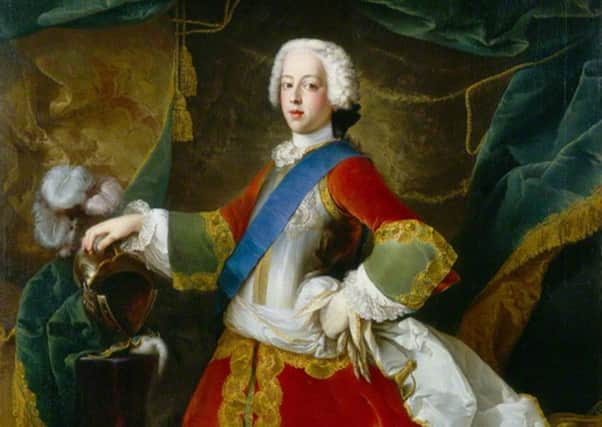Bonnie Prince Charlie was a strong “tough guy” and no effeminate weakling, says expert


Author Steve Lord, who will deliver the annual 1745 Association lecture to coincide with the Battle of Culloden anniversary later this month, said the Prince’s popular portrayal belied his true identity.
He claimed the Prince was as well known as Julius Casear, Willliam Wallace and Winston Churchill but that his identity had been skewed given the way he had been “romantically” marketed for tourists on biscuit tins and tea towels in a way the others had not.
Advertisement
Hide AdAdvertisement
Hide AdThe “very freshed face and effeminate” depiction of the Prince in paintings such as Louis Gabriel Blanchet’s Prince Charles Edward Stuart, which was painted when the subject was 18-years-old, helped to further skew his image.
He added: “Here he certainly looks regal but hardly the tough guy he, in reality, was.
“The whole Jacobite campaign shows Prince Charles Edward to be much stronger than he is popularly supposed to be.”
Lord, author of Walking With Charlie, highlighted how the Prince was present throughout the nine-month campaign and then spent five months on the run after Culloden as British Government forces pursued him through some “very tough terrain in the remotest parts of Scotland”.
These included the wilderness of Knoydart, Morar, Glenmoriston, Ben Alder and numerous other trackless areas.
The author added: “The going here is very hard underfoot, even today and I cannot imagine what it must have been like in 1746 with a redcoat army constantly close behind.
“The midges, shortage of food and inadequate accommodation must have made life very difficult indeed, yet Prince Charles came through it all, commanding sufficient loyalty from those who accompanied him and in the population as a whole, to successfully escape to France in reasonably good spirits and health.
“As well as the physical strength and resilience shown by Prince Charles, he also has great mental strength and authority.”
Advertisement
Hide AdAdvertisement
Hide AdLord said the Prince did not always get his own way, such as when he was crucially over-ruled on his wish to advance south from Derby towards London.
However, this was a man who had been able to use his “sheer strength of personality” to persuade a number of clan chiefs to support him in his rising after landing at Loch nan Uamh in July 1745 with the Seven Men of Moidart, a group of key supporters, and very few weapons.
“Keeping the Jacobite army on track, all the way to Derby was a supreme mental effort, when we remember the lack of adequate support offered by the French or English and Welsh Jacobites once the army crossed the border,” Long added.
The author said he was aware of others who had criticised the hugely successful Outlander books and television series, which features events before and after the Battle of Culloden, for a “lack of historical accuracy.”
He said he did not buy into such concerns given that Outlander was “not intended to be a serious academic consideration of the Jacobite rising”.
He added: “It is essentially a work of fiction worked around real historical events and people.
“If there is fault to be found it is not to be found in the pens of either author or screenwriter. It is in the way the programme is interpreted by its viewers.
“Perhaps the programme does not go far enough to dispel the myth that the Rising was a purely England v. Scotland affair.
Advertisement
Hide AdAdvertisement
Hide Ad“There were many, mainly lowland Scots on the side of the British government and a number of Englishmen in the Prince’s forces, notably the men of the Manchester regiment.
“Perhaps the programme should make it clear that the Rising was not about an attempt by Scotland to dissolve the Union but about restoring the Stuart dynasty to the throne of Great Britain.”
Lord said, if “being picky”, he would highlight the historically inaccurate depiction of a relationship between the Prince and the French noblewoman Louise de la Tour.
He added: “According to Outlander the two met in 1744 and had a child named Henri. In fact Charles did not meet Louise until after the Rising, in 1747. Their child was named Charles. He died in infancy.
“Louise did have a child named Henri but this boy was the son of Louise and her husband Jukes de Rohan. Does this matter to most viewers of Outlander. I think not.
“In general the programme has introduced many people to the events of 1745/6. If that leads on to more academic study of the period so much the better.”
Steve Lord will deliver the 1745 Association annual commemorative lecture at Culloden Battlefield on Friday, April 12 at 1pm.
For more information and tickets, visit www.nts.org.uk
